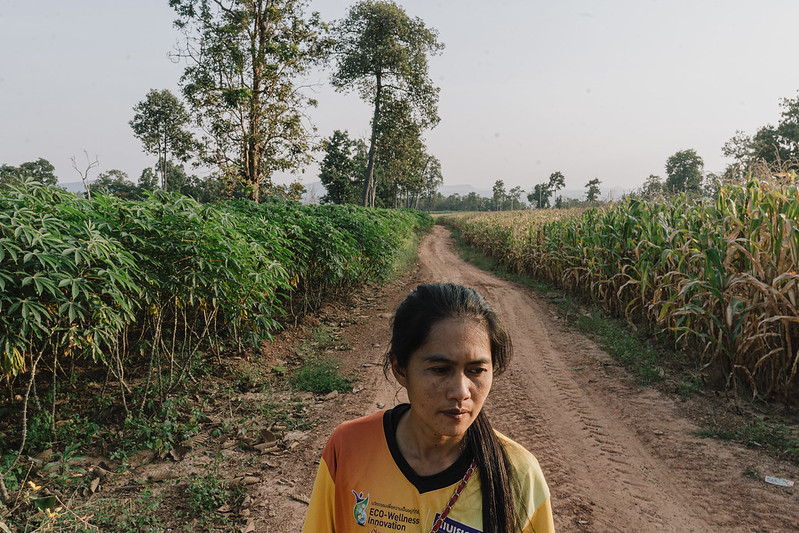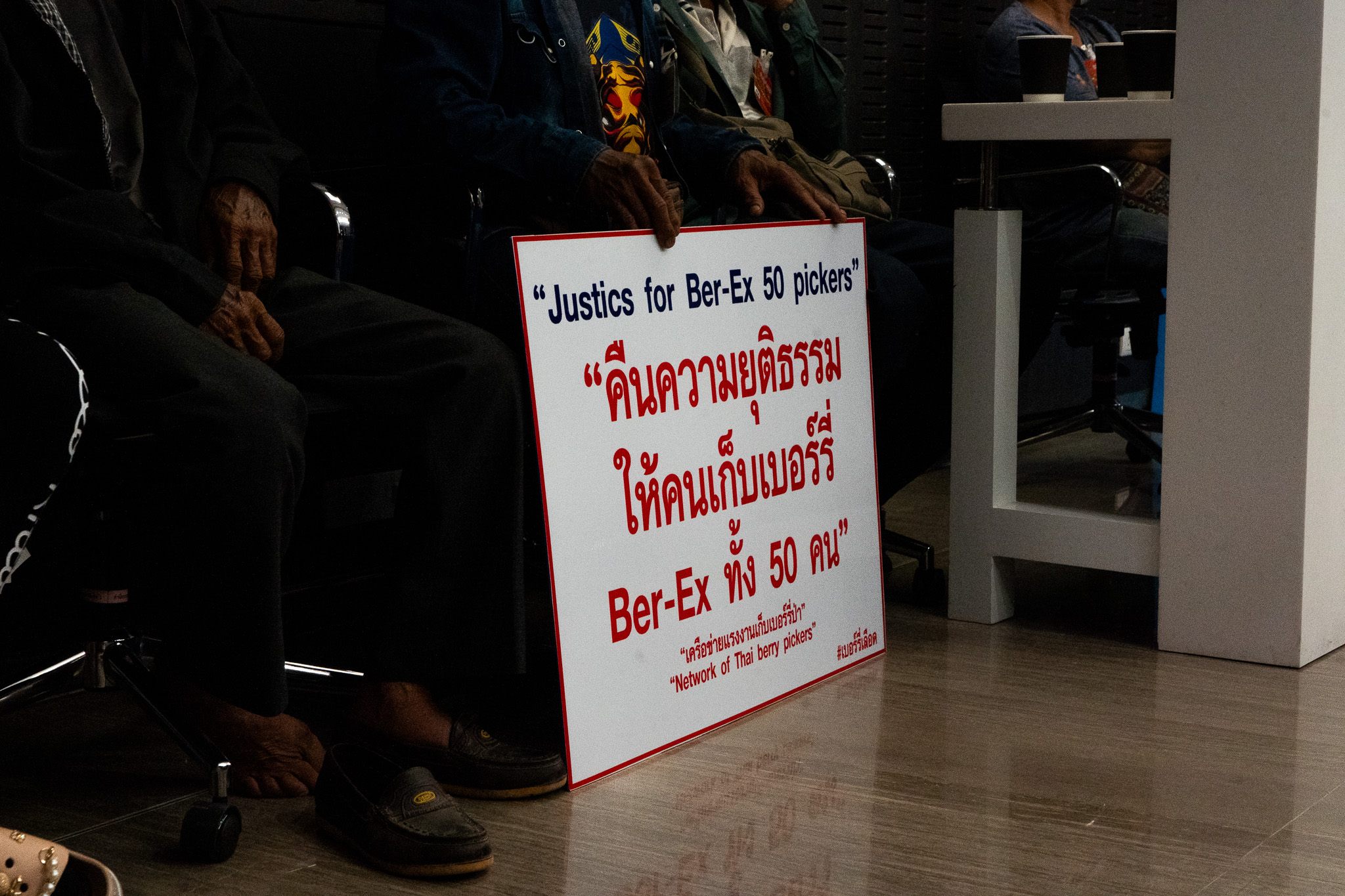The upcoming general elections in May could be another turning point for Thailand. Will voters choose to remain under a military regime or turn to a civilian government? The decision will be left up to the voters who will elect 400 members of parliament, of which 133 will come from Isaan. More than three generations ago, Isaan MPs were lauded for their courage to stand up against authoritarian governments — even at the cost of their lives. The names of these brave MPs have been invoked in recent years, as hopes are growing for Isaan MP who can live up to the grit of their predecessors, especially the four ministers who serve as the archetypes of democracy fighters.
Four Isaan politicians of the past — Thong-in Phuriphat (Ubon Ratchathani), Chamlong Daoruang (Maha Sarakham), Thawin Udon (Roi Et), and Tiang Sirikhanth (Sakon Nakhon) — are often referred to with great respect and admiration.
Jiraporn Sindhuprai, an outspoken MP from Roi Et, spoke about them on a stage of Pheu Thai Party on February 18 when unveiling the party’s MP candidates for her home province in the upcoming May elections.
She said the Isaan region has created generations of democracy champions, and the province especially was a homeland of renowned politician and lawyer Thawin Udon, one of the “Four Isaan Tigers,” who fought alongside Chamlong Daoruang and Tiang Sirikhanth, the “General of Phu Pan” who led the anti-Japanese Seri Thai movement in Isaan.
“These four fighters were the voices,” Jiraporn declared on stage. “These four Isaan ministers fought for democracy, stood up against the dictators, and spoke out for the people to be able to eat and sleep well, for a better life for Isaan people. They were not afraid of dark influences. They were not afraid of authoritarianism. They fought until their last breath.”
Jiraporn added that their struggle has not been forgotten, but has been passed on to younger generations of Isaan people, keeping the region a stronghold of democracy fighters.
Although her speech might have been merely for rallying support for the Pheu Thai Party, Jiraporn is one of the few younger MPs who have invoked the names of these four in appreciation and the legacy they left behind.
On March 4, 1949, three former cabinet ministers from Isaan – Thong-in Phuriphat, Chamlong Daoruang and Thawin Udon – were traveling with Thongpleao Chonlaphum, a former minister from Chonburi. The four were shot dead en route in Bangkok’s Bang Khen district.
Three years later, Tiang Sirikhanth However was abducted and disappeared. His remains were found in the woods of Kanchanaburi years afterwards.

Ultimate role models
Losing the four Isaan ministers who had been nicknamed the “Isaan Generals,” the country has not again witnessed such firebrand and fearless members of parliament. At times when the people have risen up against dictatorship, only a few politicians have come out in support as courageously as the four had.
The youth-led democracy movement that blossomed in 2020-2021 yearned for politicians who sincerely serve the people like in the past. On November 30, 2021, during a rally held by Khon Kaen university students, effigies of the four ministers were displayed at the statue of Field Marshal Sarit Thanarat, the authoritarian leader who took the lives of many political dissidents. The effigies were meant as a message to current Isaan members of parliament.
Wachirawit Tetsrimueang, a student activist, said the students became disappointed after seeing the performance of Isaan MPs in the many censure and parliamentary debates as it was incomparable to the performance of those Isaan MPs in the past. Therefore, they aimed to remind current MPs of the legacy and encourage them to follow in the footsteps of their predecessors.
“We wanted to convey this political message to remind the Isaan MPs to stand with the people,” said this member of Khon Kaen’s Had Enough movement. “Back then, students were disheartened by the parliament because every proposal from the democracy camp was beaten down.”
Wachirawit added that the rally had made some students aware of these four famous Isaan MPs, and they realized that ordinary people from Isaan could become a government minister and bring about change.
“People were longing for some bravery from members of parliament, but instead they made the parliament go backwards,” he said. “From 1947 to 2021, the parliament seemed to have regressed democratically, instead of becoming more developed. So in this election, we are hoping that Isaan politicians who get elected to the parliament will help bring democracy back.”
Political assassination
A chain of political conflicts between the authoritarian government and politicians who championed democracy led up to the killing of the four Isaan MPs. In the introduction to his book, Pridi Banomyong and the Four Isaan Ministers + 1, noted Thai historian Charnvit Kasetsiri asserts that following the 1932 overthrow of the absolute monarchy, “the parliamentary system was in put into place with an elected legislative assembly and/or with political parties”
“From 1933, when the first election was held, until the late 1940s,” Charnvit writes, it “was a time when the ‘dark ages’ and/or ‘political extrajudicial killing’ had crept in, where the power of ‘state jurisdiction’ (during the political era of ‘coup makers’ under Field Marshal Plaek Phibunsongkhram and Field Marshal Phin Choonhavan) for managing ‘peace keeping’ (which could literally be translated to killing and suppressing, led by [police chief] Phao Siyanon and his ‘knights’) was launched against a large number of political dissidents.”
“It can be said that a group of ‘Isaan’ members of parliament seemed to have particularly stood out, as they tried to act as representatives for the majority of people from the ‘outside’ and the ‘margin.’ They were the voices and negotiators for those living far from the center of the power (Bangkok).”
Charnvit’s book also details some notable legacies of the four ministers, especially about their ideology of liberal democracy. Therefore, unsurprisingly, Isaan students with progressive thinking nowadays desire for politicians to be as brave as those four from the past.

Incomparable conviction
Assoc. Prof. Dr. Somchai Phatharathananunth of Maha Sarakham University’s Humanities and Social Sciences faculty agrees that there have been no other MPs from the plateau as courageous and as reliable as the four ministers.
He said the political context back then was quite different from now. In the past, politicians encountered and challenged dictatorship directly. When they started their political career, they dedicated their lives fighting for democracy.
“Politicians from our time are not like that,” he said in light of his research on Thailand’s and Isaan’s political contexts.
Somchai thinks one of the most remarkable achievements of the four ministers was their parliamentary speeches focusing on local issues to inspire changes on a structural level.
“Tiang once debated in the parliament calling for an abolishment of feudal taxes and inclusive developments in all rural areas, not just Isaan. That agitated Field Marshal Plaek, because he wanted that budget for buying weapons, as he claimed that the country is a house and soldiers are the fences. So, they clashed,” Somchai said.
He added that the four ministers actually didn’t promote regionalism, but they wanted equal development across the country, especially in the countryside. Nonetheless, the Isaan MPs were often belittled in parliament and some were eventually accused of separatism, which led to their assassinations.
Somchai said, “In fact, the Isaan MPs did not rally for regionalism. Tiang had even debated about the Crown Property Bureau.”
“During the time when Pridi Banomyong was prime minister [1945-46], Isaan MPs or ministers were ridiculed by the Democrat Party MPs who mocked them by putting up a sign in the parliament that read, ‘The Sticky Rice People’,” Somchai said.
It is not completely new to look up to the four ministers as role models of politicians. Still, after the rise of the youth-led democracy movement across the country, especially in the Isaan region this past couple of years, the expectation for change is higher than ever.
In the 2023 elections, Isaan voters have a significant amount of momentum that can shift the political landscape, as the region holds one third of voting constituencies, more than any other region in Thailand.
Read in Thai version here





